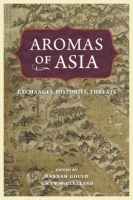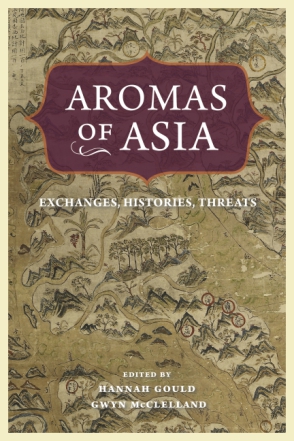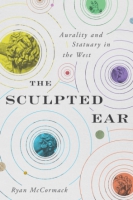Aromas of Asia
Exchanges, Histories, Threats
Edited by Hannah Gould and Gwyn McClelland
“Aromas of Asia is very much at the cutting edge of the field. Many books on smell engage in a battle with the straw man of ‘smell-as-neglected’ and ‘the West as ocular-centric.’ This book has moved way beyond such simplicities, and through its varied methodologies and diverse topics we emerge with a number of fresh perspectives on smell in Asia.”
- Description
- Reviews
- Bio
- Table of Contents
- Sample Chapters
- Subjects
“Aromas of Asia is very much at the cutting edge of the field. Many books on smell engage in a battle with the straw man of ‘smell-as-neglected’ and ‘the West as ocular-centric.’ This book has moved way beyond such simplicities, and through its varied methodologies and diverse topics we emerge with a number of fresh perspectives on smell in Asia.”
Hannah Gould is Melbourne Postdoctoral Fellow at the University of Melbourne. She is the author of When Death Falls Apart: Making and Unmaking the Necromaterial Traditions of Contemporary Japan.
Gwyn McClelland is Senior Lecturer at the University of New England, Australia. He is the author of Dangerous Memory in Nagasaki: Prayers, Protests and Catholic Survivor Narratives.
List of Illustrations
Acknowledgements
Introduction: Scents, Sensory Colonialism, and Social Worlds in Asia
Gwyn McClelland and Hannah Gould
Part I: Poetics and Philosophies
1. On a Trail of Incense: Japan and Olfactory Thought
Lorenzo Marinucci
2. The Shifting Smellscape of Early Medieval China: Emperor Wu’s Strange Aromatics
Peter Romaskiewicz
3. The Poetics of Incense in the Lives of Medieval Chinese Officials
Qian Jia
Part II: Making Sensory Boundaries
4. A Whiff of Southeast Asia: Tasting Durian and Kopi
Gaik Cheng Khoo and Jean Duruz
5. The Aroma of a Place in the Sunshine: Breathing in Japanese History Through the Fiction of Endō Shūsaku
Gwyn McClelland
6. Words That Smell: Caste and Odors in Hindi Dalit Autobiographies
Shivani Kapoor
7. Love Is in the Air: A Study of Johnnie To’s Blind Detective
Aubrey Tang
Part III: Bodies–Life, Work, Death
8. Pregnancy, Childbirth, and the Smell of Vulnerability in Lombok, Indonesia
Saki Tanada
9. Harnessing the Stenches of Waste: Human Bodies as Olfactory Environmental Sensors in Contemporary China
Adam Liebman
10. The Smell of a Corpse: Olfactory Culture in a Singaporean Funeral Parlor
Ruth E. Toulson
List of Contributors
Index
Download a PDF sample chapter here: Introduction
Also of Interest
Mailing List
Subscribe to our mailing list and be notified about new titles, journals and catalogs.







